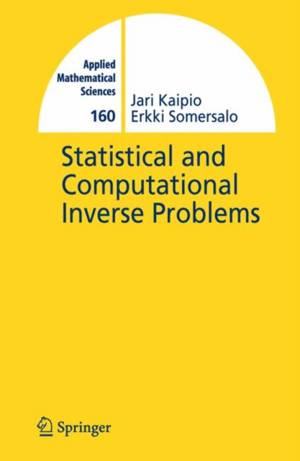
- Afhalen na 1 uur in een winkel met voorraad
- Gratis thuislevering in België vanaf € 30
- Ruim aanbod met 7 miljoen producten
- Afhalen na 1 uur in een winkel met voorraad
- Gratis thuislevering in België vanaf € 30
- Ruim aanbod met 7 miljoen producten
Zoeken
€ 244,45
+ 488 punten
Uitvoering
Omschrijving
This book is aimed at postgraduate students in applied mathematics as well as at engineering and physics students with a ?rm background in mathem- ics. The ?rst four chapters can be used as the material for a ?rst course on inverse problems with a focus on computational and statistical aspects. On the other hand, Chapters 3 and 4, which discuss statistical and nonstati- ary inversion methods, can be used by students already having knowldege of classical inversion methods. There is rich literature, including numerous textbooks, on the classical aspects of inverse problems. From the numerical point of view, these books concentrate on problems in which the measurement errors are either very small or in which the error properties are known exactly. In real-world pr- lems, however, the errors are seldom very small and their properties in the deterministic sensearenot wellknown.For example, inclassicalliteraturethe errornorm is usuallyassumed to be a known realnumber. In reality, the error norm is a random variable whose mean might be known.
Specificaties
Betrokkenen
- Auteur(s):
- Uitgeverij:
Inhoud
- Aantal bladzijden:
- 340
- Taal:
- Engels
- Reeks:
- Reeksnummer:
- nr. 160
Eigenschappen
- Productcode (EAN):
- 9780387220734
- Verschijningsdatum:
- 1/12/2004
- Uitvoering:
- Hardcover
- Formaat:
- Genaaid
- Afmetingen:
- 161 mm x 233 mm
- Gewicht:
- 648 g

Alleen bij Standaard Boekhandel
+ 488 punten op je klantenkaart van Standaard Boekhandel
Beoordelingen
We publiceren alleen reviews die voldoen aan de voorwaarden voor reviews. Bekijk onze voorwaarden voor reviews.











